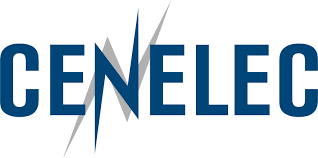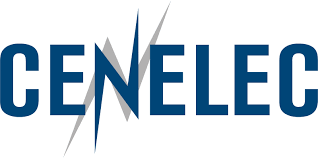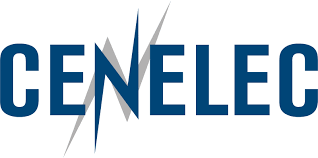Test Robot Arm for Collision with Fixed Object (measurement of peak pressure)




This document defines the HBES Information Model and a corresponding data exchange format for the Home and Building HBES Open Communication System.

This international standard establishes general principles for network- and device-management shared by and independent of the installation mode. The goal is to standardize the interaction, between a management client and a management server, that shall lead to the successful configuration of the devices. In this way, these management procedures thus specify the highest level communication requirements between a management client and a management server. These requirements specify: a) the sequence of messages that shall be exchanged between a management client and a management server, and b) the contents and interpretation of the transported data, and c) the action to take based on these data (setting internal resources, state machines, physical actions, …), and d) the error and exception handling. The management procedures base on the application layer services. Some management procedures solely base on the use of one or a sequence of dedicated application layer services to achieve the required goal. For these, the documents EN 50090-4-1 and EN 50090-4-2 provide sufficient information for the underlying mechanisms. Other management procedures additionally use the application layer services to access internal data in the management server to achieve the required goal. These data are laid down as objects as specified in EN 50090 3 2.

This European Standard gives general guidelines and recommendations to ensure interworking between HBES devices made by different manufacturers. It also contains design guidelines for the design of Functional Blocks and new datapoint types, the building blocks of HBES interworking. In this way, the standard can be used as a basis to design application specifications relative to an Application Domain. If designed and supported by a large group of manufacturers, such application specifications will ensure to end customers a high degree of interoperability between products based on the HBES Communication System of different manufacturers. This European Standard is used as a product family standard. It is not intended to be used as a stand alone standard.

This European Standard concentrates on control applications for Home and Building HBES Open Communication System and covers any combination of electronic devices linked via a digital transmission network. Home and Building Electronic System as provided by the HBES Open Communication System is a specialized form of automated, decentralised and distributed process control, dedicated to the needs of home and building applications. The EN 50090 series concentrates on HBES Open Communication System Class 1 and includes a specification for a communication network for Home and Building for example for the control of lighting, heating, food preparation, washing, energy management, water control, fire alarms, blinds control, different forms of security control, etc. This European Standard gives an overview of the features of the HBES Open Communication System and provides the reader with references to the different parts of EN 50090 series. This European Standard is used as a product family standard. It is not intended to be used as a stand-alone standard.

ISO/IEC 19395:2015 provides Messages that facilitate integrated or "smart" monitoring and control of Resources in those islands. The Messages are exchanged between the Management Function and Resources. ISO/IEC 19395:2015 acknowledges that those Resources may be composed of other Resources (e.g. a rack may contain servers, ventilators, etc.). In addition, e.g. those servers may be viewed from their computing, energy consumption or dissipation aspects which ISO/IEC 19395:2015 models as Resource Components and groups into IT, power and fluid Domains, respectively.

This document specifies water usage effectiveness (WUE) as a key performance indicator (KPI) for quantifying the water consumption of a data centre during the use phase of the data centre life cycle.
WUE is a simple method for reporting the water intensity of the data centre operating. By reporting water consumption, it is possible to present the data centre's resource effectiveness.
This document:
a) defines the WUE of a data centre;
b) introduces WUE measurement categories;
c) describes the relationship of this KPI to a data centre’s infrastructure, information technology equipment and information technology operations;
d) defines the measurement, the calculation and the reporting of the parameter; and
e) provides information on the correct interpretation of the WUE.

This document specifies carbon usage effectiveness (CUE) as a key performance indicator (KPI) for quantifying the CO2 emissions of a data centre during the use phase of the data centre life cycle.
CUE is a simple method for reporting the CO2 intensity of the data centre operating. By reporting CO2emissions, it is possible to present the data centre's contribution to climate change (enhanced greenhouse effect).
This document:
a) defines the CUE of a data centre;
b) introduces CUE measurement categories;
c) describes the relationship of this KPI to a data centre’s infrastructure, information technology equipment and information technology operations;
d) defines the measurement, the calculation and the reporting of the parameter; and
e) provides information on the correct interpretation of the CUE.

This document specifies the cooling efficiency ratio (CER) as a key performance indicator (KPI) for quantifying the efficient use of energy to control the temperature of spaces within a data centre (DC).
This document:
a) defines the CER of a DC;
b) describes the relationship of this KPI to a DC’s infrastructure, information technology equipment and information technology operations;
c) defines the measurement, the calculation and the reporting of the parameter; and
d) provides information on the correct interpretation of the CER.
Annex A describes the correlation of the CER and other KPIs.
Annex B provides examples of the usage of the CER.
Annex C introduces the parameters that affect the CER.
Annex D describes requirements and recommendations for derivatives of KPIs associated with the CER.
This document is not applicable to cooling systems that are not powered by electricity (e.g. heat-driven absorption chillers).

This document specifies the energy reuse factor (ERF) as a KPI to quantify the reuse of the energy consumed in a data centre. ERF is defined as the ratio of energy being reused divided by the sum of all energy consumed in a data centre. The ERF does reflect the efficiency of the reuse process; the reuse process is not part of a data centre.
